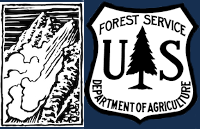GNFAC Avalanche Forecast for Sat Mar 29, 2025
<p><span><span><span><strong><span><span>Today is a transition day, between the warmth and mostly dry weather of the last week and the snowy pattern that is setting up for the coming week. </span></span></strong></span></span></span><span><span><span><span><span><span>This transition leaves us in a bit of a lull today, with large avalanches unlikely and </span></span></span></span></span></span><span><span><span><strong><span><span>generally safe conditions</span></span></strong></span></span></span><span><span><span><span><span><span>.</span></span></span></span></span></span></p>
<p><span><span><span><span><span><span>With temperatures below freezing this morning and only expected to get a little above freezing today, the wet snow concerns we’ve been dealing with all week should be minimal. Some areas might not have a stout crust at the surface this morning and in others it might break down today, so do look out for </span></span></span></span></span></span><span><span><span><strong><span><span>Wet Loose avalanches </span></span></strong></span></span></span><span><span><span><span><span><span>if you’re sinking more than ankle deep into wet snow. Treed, low elevation slopes facing the southern half of a compass are where you’re most likely to encounter this lingering wet snow.</span></span></span></span></span></span></p>
<p><span><span><span><span><span><span>There is a little bit of new snow this morning and a bit more may fall today, but it won’t be enough to make for much avalanche hazard. There may be some thin wind drifts that could break as small </span></span></span></span></span></span><span><span><span><strong><span><span>Wind Slab avalanches</span></span></strong></span></span></span><span><span><span><span><span><span>, but at most, these would only be an issue in extreme terrain where losing your footing or getting pushed a few feet off course would have big consequences.</span></span></span></span></span></span></p>
<p><span><span><span><span><span><span>The avalanche danger is LOW today.</span></span></span></span></span></span></p>
<p><span><span><span><span><span><span>Conditions will be changing with the new snow over the coming days, so make sure to check the again for the latest updates before heading out.</span></span></span></span></span></span></p>
Weather and Avalanche Log for Sat Mar 29, 2025
Temps below freezing everywhere
Weather and Avalanche Log for Fri Mar 28, 2025
Air temps above freezing near Bozeman
Below freezing everywhere else
Wet Snow in the Southern Madison
We rode into the Taylor Fork, up to the weather station, and out towards the wilderness boundary. Temperatures were around 40 degrees at the car. There was a surficial refreeze last night with a skiff of graupel on top. With mostly sunny skies and calm winds the snow surface dampened quickly.
We dug down on two sunny aspects (E-SE) and noted moist snow throughout the snowpack. In our first snowpit (9220', HS:108) we did not get notable test results (ECTX). We found that although faceted snow remains at the base of the snowpack, water has percolated down and moistened these basal layers.
We also dug on a NW aspect (8800', HS:199) with no notable test results (ECTX). Moist snow exists in the upper 1.5' of the snowpack with dry snow to the ground.
We noted no cracking or collapsing. We saw a good number of wet-loose avalanches on steep sunny slopes, but all were relatively small in width and depth.
Limited re-freeze in Southern Bridgers
We skied Saddle as early as we could after the lifts opened, but we were still a bit late, and/or there was limited overnight refreeze, I suspect more of the latter. Clear-ish skies overnight had me optimistic, but warms temps seem to have dominated below 9000 ft.
The first 100 vertical feet from the summit skied quite well where a thin melt-freeze crust was just starting to break down. Overcast skies and L-M winds likely limited warming. Below 9000 ft we poked around and found the top 15-20cm was moist and unsupportive on NE-SE aspects. We kicked off numerous roller balls but no actual loose wet avalanches.
The best skiing was in previously skied areas, such as the guts of going home chute, or in-bounds.
GNFAC Avalanche Forecast for Fri Mar 28, 2025
<p><span><span><span><strong><span><span>Wet loose avalanches</span></span></strong></span></span></span><span><span><span><span><span><span> are the primary concern today. Cooler temperatures this morning and lower forecasted high temperatures make me a bit less concerned about wet snow today, but we’re not completely out of the woods yet. </span></span></span></span></span></span></p>
<p><span><span><span><span><span><span>Cloudy skies overnight and above freezing air temperatures mean that there will only be a thin crust, if any, on the snow surface this morning. In some areas the snowpack hasn’t refrozen in two or three days. High temperatures aren’t supposed to be quite as crazy as they’ve been the last couple days, but they will still be quite warm. If the sun does come out from behind the clouds this morning (as forecasted), melting will begin rapidly and any crust that did form overnight will quickly start to break down.</span></span></span></span></span></span></p>
<p><span><span><span><span><span><span>Stay on alert for signs of wet snow. If you’re travelling on top of a firm crust, wet snow concerns are minor. If you’re breaking through into wet glop, that means it’s time to get off steep slopes. Pay attention to what’s above you, as one of the main threats of wet loose avalanches is having one start naturally above you, often from near exposed rocks.</span></span></span></span></span></span></p>
<p><span><span><span><span><span><span>Snow on shady slopes at high elevations has stayed cold and dry, but you’ll have to really hunt to find soft snow today.</span></span></span></span></span></span></p>
<p><span><span><span><span><span><span>Avalanche danger is MODERATE.</span></span></span></span></span></span></p>
<p><span><span><span><span><span><span>Much cooler temperatures (below freezing in most places this morning) mean that </span></span></span></span></span></span><span><span><span><strong><span><span>wet loose avalanches </span></span></strong></span></span></span><span><span><span><span><span><span>are only a minor concern. Pay attention if you’re breaking through surface crusts into wet snow. In general, I expect the snowpack to be on its way towards refreezing and locking up. Sunshine this morning may melt the snow surface a bit, but I anticipate any wet loose sluffs to be small and only a concern in the most exposed terrain. </span></span></span></span></span></span></p>
<p><span><span><span><span><span><span>The snowpack is generally stable. You might be able to find a wind slab somewhere that hasn’t completely bonded yet, but after days of warm temperatures this concern is also isolated at best. </span></span></span></span></span></span></p>
<p><span><span><span><span><span><span>Tooth rattling riding conditions and the potential for long falls on firm, refrozen surfaces are likely the real primary hazards today. </span></span></span></span></span></span></p>
<p><span><span><span><span><span><span>Large avalanches are unlikely and the avalanche danger is LOW.</span></span></span></span></span></span></p>
Weather and Avalanche Log for Thu Mar 27, 2025
Air temps above freezing
Clear skies
